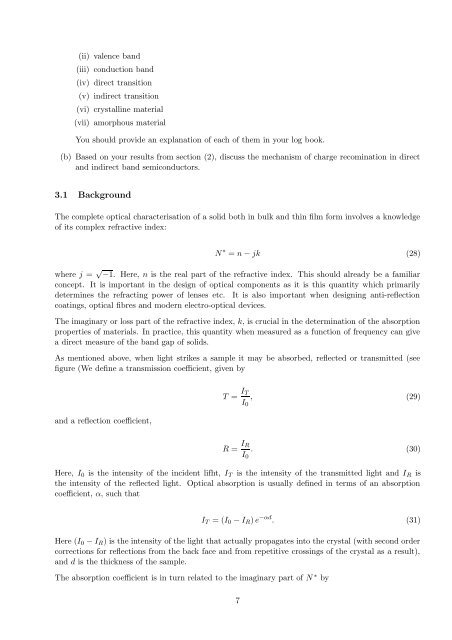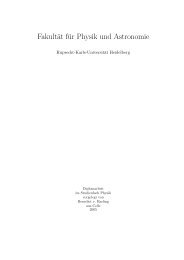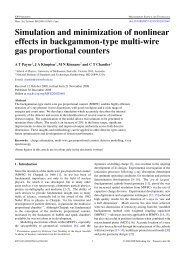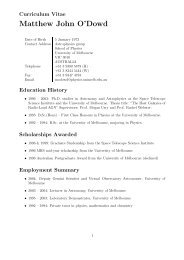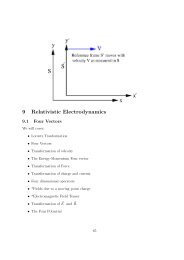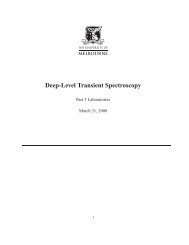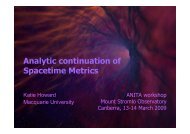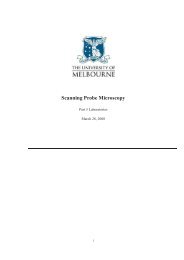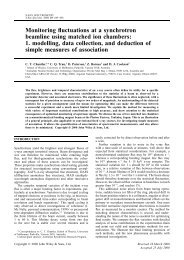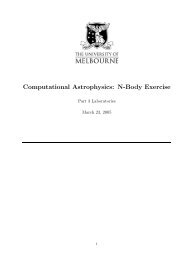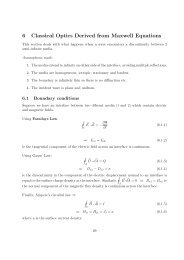1 Introduction 2 The Haynes-Shockley Experiment
1 Introduction 2 The Haynes-Shockley Experiment
1 Introduction 2 The Haynes-Shockley Experiment
Create successful ePaper yourself
Turn your PDF publications into a flip-book with our unique Google optimized e-Paper software.
(ii) valence band<br />
(iii) conduction band<br />
(iv) direct transition<br />
(v) indirect transition<br />
(vi) crystalline material<br />
(vii) amorphous material<br />
You should provide an explanation of each of them in your log book.<br />
(b) Based on your results from section (2), discuss the mechanism of charge recomination in direct<br />
and indirect band semiconductors.<br />
3.1 Background<br />
<strong>The</strong> complete optical characterisation of a solid both in bulk and thin film form involves a knowledge<br />
of its complex refractive index:<br />
N ∗ = n − jk (28)<br />
where j = √ −1. Here, n is the real part of the refractive index. This should already be a familiar<br />
concept. It is important in the design of optical components as it is this quantity which primarily<br />
determines the refracting power of lenses etc. It is also important when designing anti-reflection<br />
coatings, optical fibres and modern electro-optical devices.<br />
<strong>The</strong> imaginary or loss part of the refractive index, k, is crucial in the determination of the absorption<br />
properties of materials. In practice, this quantity when measured as a function of frequency can give<br />
a direct measure of the band gap of solids.<br />
As mentioned above, when light strikes a sample it may be absorbed, reflected or transmitted (see<br />
figure (We define a transmission coefficient, given by<br />
and a reflection coefficient,<br />
T = I T<br />
I 0<br />
, (29)<br />
R = I R<br />
I 0<br />
. (30)<br />
Here, I 0 is the intensity of the incident lifht, I T is the intensity of the transmitted light and I R is<br />
the intensity of the reflected light. Optical absorption is usually defined in terms of an absorption<br />
coefficient, α, such that<br />
I T = (I 0 − I R ) e −αd . (31)<br />
Here (I 0 − I R ) is the intensity of the light that actually propagates into the crystal (with second order<br />
corrections for reflections from the back face and from repetitive crossings of the crystal as a result),<br />
and d is the thickness of the sample.<br />
<strong>The</strong> absorption coefficient is in turn related to the imaginary part of N ∗ by<br />
7


